A comprehensive field guide to Australian mammals reveals the diversity of 382 species, detailing their appearance, habits, and habitats, essential for researchers and wildlife enthusiasts alike.
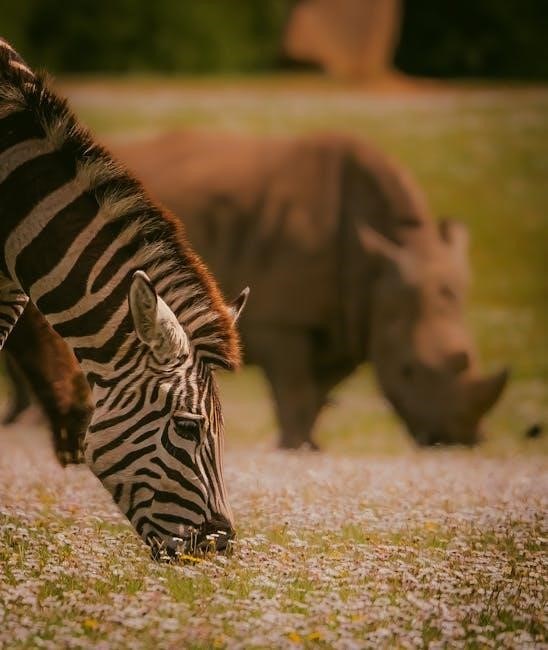
Overview of Mammalian Diversity in Australia
Australia is home to a unique and diverse range of mammals, with over 380 species documented. This diversity is dominated by marsupials, such as kangaroos, koalas, and wombats, which are found nowhere else in the world. Placental mammals, like bats and rodents, also contribute to the rich mammalian fauna. Many of these species have adapted to Australia’s harsh and varied environments, from arid deserts to lush rainforests. The country’s isolation has led to the evolution of endemic species, making its mammalian diversity a fascinating subject for study. Field guides play a crucial role in identifying and understanding these species, providing detailed information on their habitats, behaviors, and distinguishing features. This diversity underscores Australia’s importance as a global hotspot for mammalian research and conservation efforts.
Importance of Field Guides for Mammal Identification
Field guides are indispensable tools for identifying Australian mammals, offering detailed descriptions of species, habitats, and diagnostic features. These guides enable researchers and enthusiasts to accurately distinguish between similar species, such as marsupials and placental mammals. By providing high-quality images and concise information, field guides simplify the process of recognizing mammals in their natural environments. They are particularly valuable in Australia, where the diversity of species, including endemic and rare mammals, requires precise identification. Portable and comprehensive, field guides like A Field Guide to the Mammals of Australia are essential for both scientific studies and conservation efforts, fostering a deeper understanding of Australia’s unique mammalian fauna.

Characteristics of Australian Mammals
Australian mammals exhibit unique traits, including marsupials with pouches and specialized teeth, while placental mammals show adaptions to diverse environments.
Distinguishing Features of Marsupials
Marsupials are characterized by their unique reproductive strategy, featuring a short gestation period and a pouch where young complete development. They often exhibit robust limbs and sharp teeth, adapted for diverse diets. Many marsupials, like kangaroos and koalas, have strong hind legs for hopping or climbing. Their dental structure is distinct, with prominent incisors and premolars designed for grinding vegetation or tearing flesh. Marsupials also tend to have large, pointed ears and a stocky build, enhancing their ability to navigate varied Australian habitats. These traits, highlighted in field guides, help differentiate marsupials from placental mammals, emphasizing their evolutionary adaptations to Australia’s unique ecosystems;
Unique Traits of Australian Placental Mammals
Australian placental mammals, though fewer in number than marsupials, exhibit remarkable adaptability and ecological significance. Many species, such as bats and rodents, have thrived due to their ability to exploit diverse habitats. These mammals often display specialized traits like advanced sensory systems and unique reproductive strategies, enabling them to coexist with marsupials. For instance, Australian bats are crucial pollinators and seed dispersers in tropical ecosystems, while certain rodents have evolved to survive in arid environments. Their ability to adapt to Australia’s varied landscapes underscores their ecological resilience. Despite their smaller diversity compared to marsupials, placental mammals play vital roles in maintaining ecosystem balance, making them a fascinating subject for study and conservation efforts.

Classification of Australian Mammals
Australian mammals are classified into marsupials and placental mammals, with field guides providing detailed taxonomy, characteristics, and species identification to aid researchers and enthusiasts in biological studies.
Marsupials: Families and Their Characteristics
Marsupials dominate Australia’s mammalian diversity, with iconic families like Macropodidae (kangaroos, wallabies) and Phascolarctidae (koalas). These unique mammals are characterized by their pouches, where they nurture their young. Families such as Dasyuridae (quolls, dunnarts) and Peramelidae (bandicoots) exhibit diverse adaptations, from carnivorous diets to omnivorous habits. The marsupial families vary in size, behavior, and ecological roles, reflecting Australia’s evolutionary history. Their traits, such as strong hind legs in macropods and specialized teeth in dasyurids, highlight their remarkable diversity and adaptability to various habitats across the continent.
Placental Mammals: Key Families in Australia
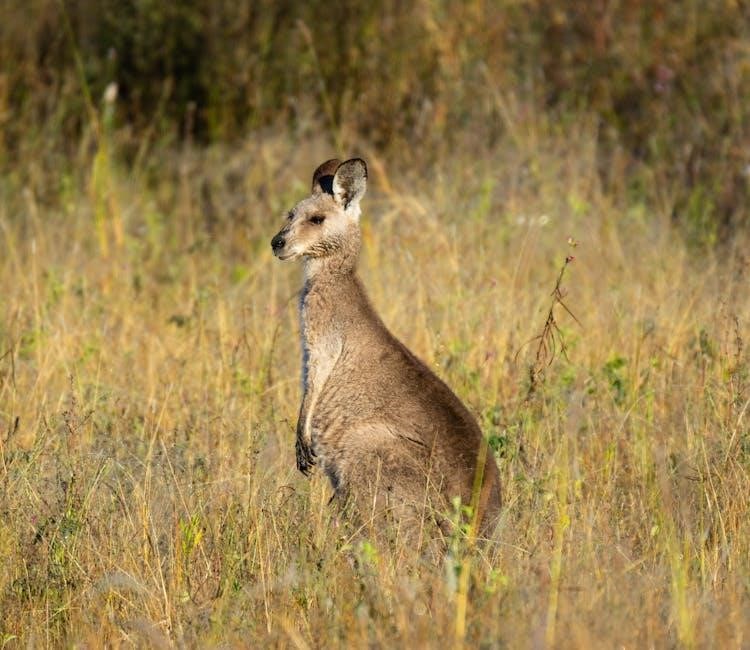
Placental mammals in Australia, though fewer in diversity compared to marsupials, include several key families that play vital ecological roles. Bats (Microchiroptera and Megachiroptera) are among the most abundant, with species like flying foxes serving as crucial pollinators and seed dispersers. Rodents, such as rats and mice, are highly adaptable and found across diverse habitats. Introduced species like rabbits, foxes, and feral cats, while invasive, highlight human impact on native ecosystems. Cetaceans, including whales and dolphins, inhabit coastal waters, showcasing Australia’s marine biodiversity. These placental mammals exhibit unique adaptations, such as echolocation in bats and specialized dental structures in rodents, underscoring their evolutionary resilience. Their presence underscores the complex interplay of native and introduced species in shaping Australia’s mammalian landscape.
Geographical Distribution of Australian Mammals
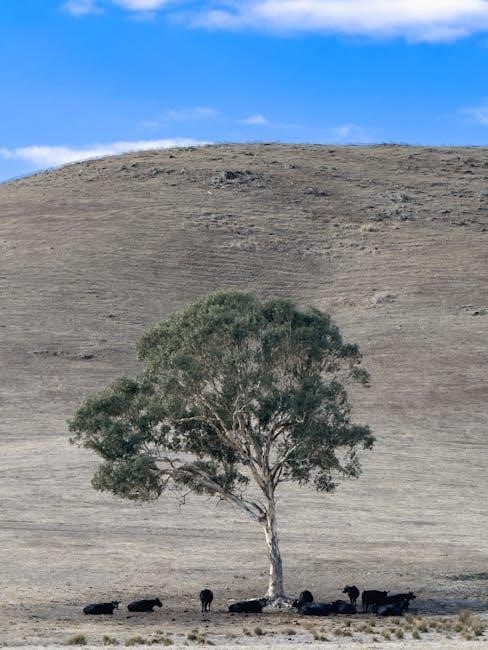
Australia’s diverse habitats, from rainforests to deserts, support a wide range of mammals, with many endemic species restricted to specific regions.
Habitat Diversity and Its Impact on Mammal Distribution
Australia’s diverse habitats, from tropical rainforests to arid deserts and coral reefs, support a wide range of mammal species. Each habitat type harbors unique mammals adapted to specific conditions. For instance, quokkas thrive in Western Australia’s forests, while bilbies inhabit the arid interior. The availability of food, water, and shelter dictates mammal distribution, with many species confined to niche environments. Urbanization and climate change have disrupted these patterns, threatening endemic species. Field guides highlight these ecological relationships, aiding researchers and enthusiasts in understanding how habitat diversity shapes mammal distribution across Australia’s varied landscapes.
Endemic Species and Their Restricted Ranges
Many Australian mammals are endemic, meaning they are found nowhere else on Earth. These species often inhabit specific, restricted regions due to geographical isolation and unique ecological conditions. For example, the platypus and echidna, iconic monotremes, are confined to freshwater habitats in eastern Australia. Similarly, the quokka is limited to Western Australia’s southwestern region, while koalas are restricted to the eastern coast. Field guides detail their diagnostic features, distribution, and habitats, aiding researchers and enthusiasts in understanding these species’ narrow ranges. Such restricted distributions highlight the importance of conservation efforts to protect these unique animals and their habitats, ensuring their survival in Australia’s diverse ecosystems. These endemic species are a testament to Australia’s evolutionary history and biodiversity.

Behavioral Adaptations of Australian Mammals
Australian mammals exhibit unique survival strategies, such as burrowing and specialized foraging, enabling them to thrive in diverse environments, from arid deserts to lush forests.
Survival Strategies in Arid and Semi-Arid Environments
Australian mammals in arid regions exhibit remarkable adaptations to survive extreme conditions. Many species, such as kangaroos and wallabies, rely on efficient water conservation mechanisms, minimizing water loss through concentrated urine and dry dung. Some mammals, like bilbies, are nocturnal, avoiding daytime heat by resting in burrows or shaded areas. Others, such as hopping mice, have specialized kidneys to retain water. Certain species store fat in their tails or bodies, enabling them to survive without water for extended periods. Behavioral adaptations, such as reduced activity during the hottest parts of the day, also play a critical role. These strategies highlight the resilience of Australian mammals in harsh, water-scarce environments, as documented in field guides and ecological studies.
Social Structures and Mating Behaviors
Australian mammals exhibit diverse social structures and mating behaviors, shaped by their evolutionary history and environmental pressures. Many marsupials, like kangaroos, live in groups, or “mobs,” which enhance survival through collective vigilance and resource sharing. In contrast, some species, such as bilbies, are solitary, only coming together for mating. Mating behaviors often involve complex displays, such as male kangaroos engaging in “boxing” matches to establish dominance. These strategies ensure genetic fitness and adaptability. Field guides detail these behaviors, offering insights into the intricate social dynamics of Australian mammals, which are crucial for understanding their ecological roles and conservation needs.
Ecological Roles of Australian Mammals
As seed dispersers and ecosystem engineers, Australian mammals play crucial roles, maintaining ecological balance between predators and prey and aiding nutrient cycling in diverse habitats.
Predators and Prey in Australian Ecosystems
Australian mammals play vital roles as both predators and prey, maintaining ecological balance. Key predators include marsupial carnivores like quolls and Tasmanian devils, which hunt smaller mammals, reptiles, and birds. Placental predators, such as dingoes, also contribute to controlling prey populations. Herbivorous marsupials, like kangaroos and wallabies, are prey for these predators, while also shaping vegetation patterns. Field guides detail these interactions, aiding researchers in understanding food webs. Camera trap images and expert elicitation methods enhance studies of predator-prey dynamics, revealing how species adapt to environmental changes. This interplay is crucial for conservation efforts, ensuring the survival of both predators and prey in Australia’s unique ecosystems.
Seed Dispersal and Ecosystem Engineering
Australian mammals play a vital role in seed dispersal and ecosystem engineering, influencing vegetation structure and biodiversity. Many species, such as possums and sugar gliders, consume fruits and deposit seeds in new locations, often with nutrient-rich feces, aiding forest regeneration. Some marsupials bury seeds while foraging, inadvertently acting as “ecosystem engineers” by creating microhabitats for plant growth. Wombats, through their burrowing, aerate soil and improve water infiltration, benefiting both flora and fauna. These interactions highlight the interconnectedness of Australian mammals with their environments, as detailed in field guides like Menkhorst and Knight’s comprehensive work. Such ecological roles underscore the importance of preserving these species to maintain healthy, dynamic ecosystems. Their contributions are essential for sustaining Australia’s unique biodiversity.
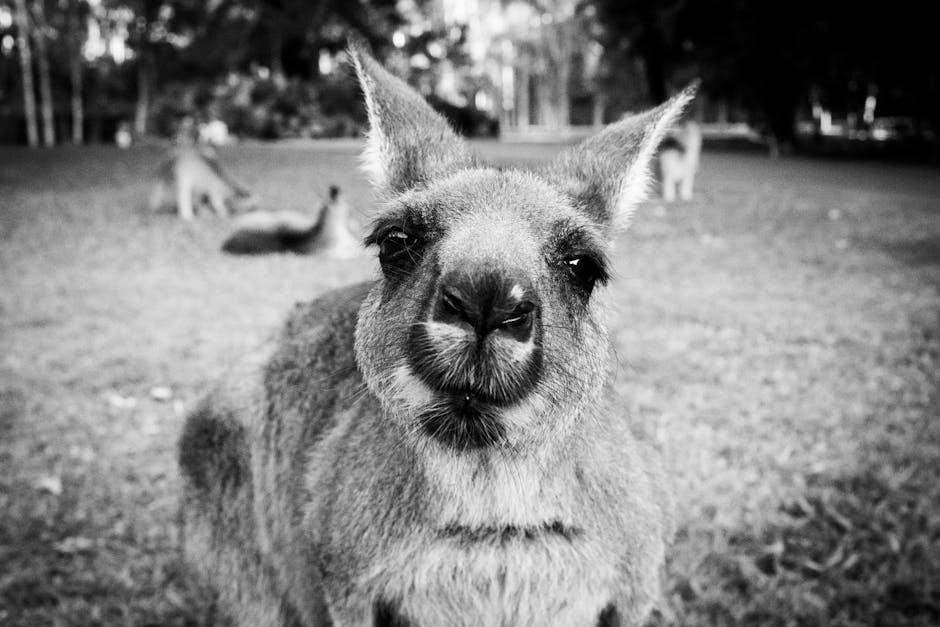
Conservation Status of Australian Mammals
Australian mammals face significant threats, with many species classified as endangered. Habitat loss, invasive predators, and climate change drive these risks. Conservation efforts, including protected areas and research programs, are critical to safeguarding biodiversity and ensuring survival.

Threatened and Endangered Species
Australia is home to numerous threatened and endangered mammal species, with habitat loss, introduced predators, and climate change being major contributors. The koala, once abundant, now faces significant threats due to deforestation and urbanization. Similarly, the northern hairy-nosed wombat and the eastern barred bandicoot are critically endangered, with limited populations remaining. Conservation efforts, such as protected areas and breeding programs, are crucial to their survival. Field guides play a vital role in raising awareness about these species, providing detailed information on their habits and habitats. By understanding their plight, researchers and enthusiasts can contribute to their preservation, ensuring these unique animals continue to thrive in their native environments. Immediate action is necessary to prevent further declines and protect Australia’s biodiversity.
Conservation Efforts and Protected Areas
Conservation efforts for Australian mammals focus on protecting endangered species and their habitats. National parks and wildlife reserves play a crucial role in safeguarding biodiversity. Field guides, such as A Field Guide to the Mammals of Australia, provide critical information for researchers and conservationists, aiding in the identification and monitoring of species. Community involvement and education programs are vital for raising awareness about threatened mammals. Protected areas are essential for preserving the unique habitats of endemic species, many of which are found nowhere else on Earth. These efforts are complemented by research initiatives and wildlife conservation protocols, ensuring the long-term survival of Australia’s mammalian diversity. By addressing threats like habitat loss and invasive species, these programs help maintain ecological balance and promote coexistence with wildlife.
How to Identify Australian Mammals
Identifying Australian mammals requires examining key features like fur, size, and shape. Field guides and tracking techniques enhance observation of these unique species effectively.
Key Identification Features: Fur, Size, and Shape
Identifying Australian mammals often relies on distinct physical traits such as fur texture, coloration, and patterns, which can vary significantly between species. Size differences are also critical, with some marsupials weighing just a few grams, while others, like kangaroos, can reach over 80 kilograms. Shape is another vital factor, as features like ear structure, tail length, and body proportions can help distinguish species. For example, the pointed snout of a bandicoot contrasts with the rounded face of a possum. Observing these characteristics in the field, along with seasonal changes in fur, enhances accurate identification. A detailed field guide is essential for comparing and confirming these visual cues, ensuring precise classification of Australia’s diverse mammalian fauna.
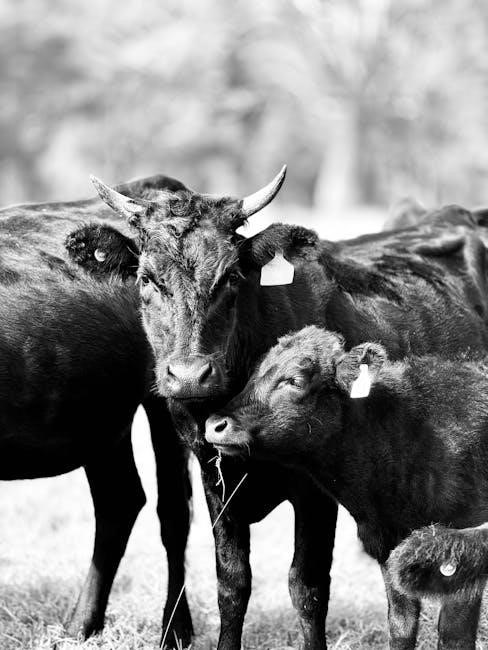
Tracking and Observing Mammals in the Wild
Tracking and observing Australian mammals require patience, knowledge, and the right tools. Field guides provide essential insights into identifying species through tracks, scat, and burrows. Camera traps are increasingly used to monitor elusive creatures, offering glimpses into their behavior and habitat use. Expert elicitation helps estimate population trends, while scanning electron microscopy aids in species identification. Observing mammals in their natural habitats reveals their survival strategies, such as nocturnal activity in arid zones. For researchers and enthusiasts alike, these methods enhance understanding and conservation efforts, making wildlife biology a vital field for studying non-domesticated species. By combining traditional techniques with modern technology, tracking and observing become rewarding experiences that deepen our connection to Australia’s unique fauna.